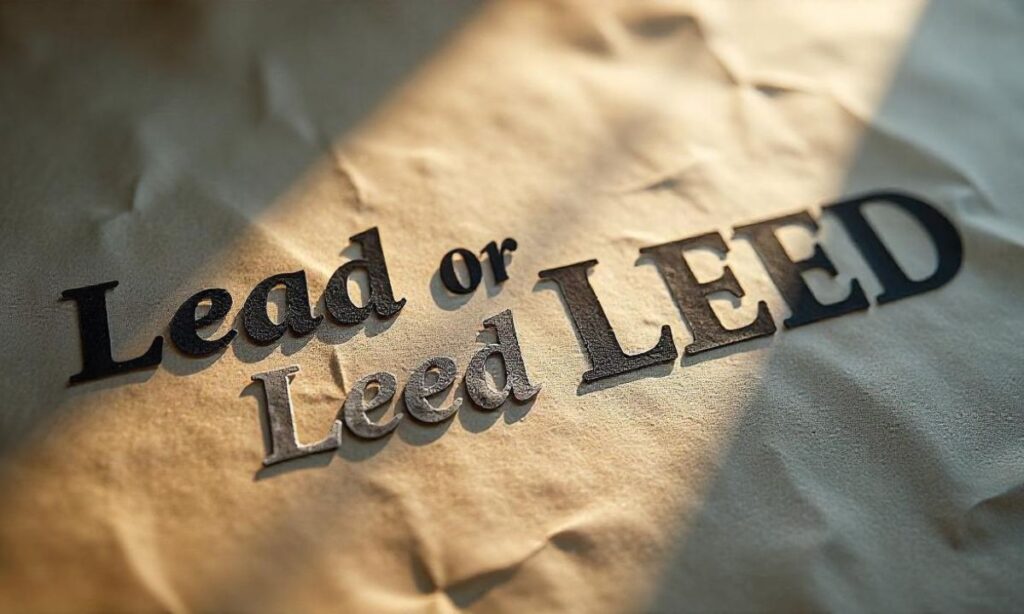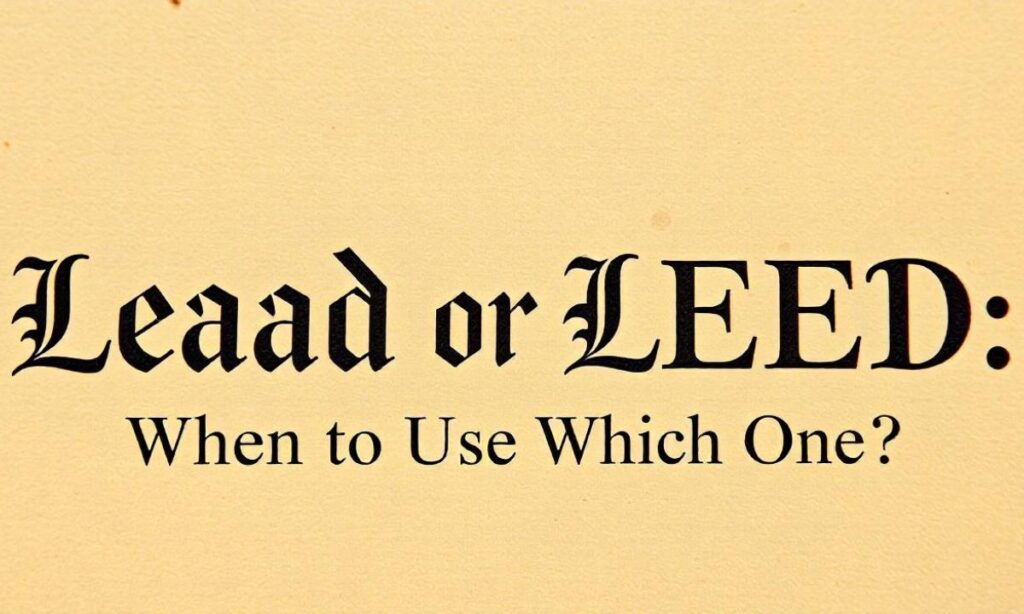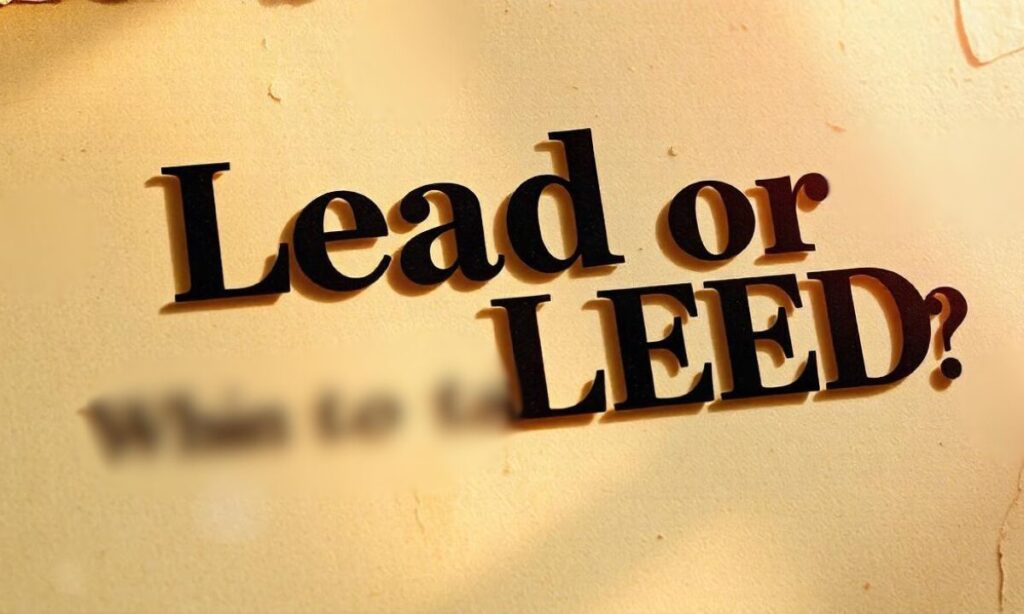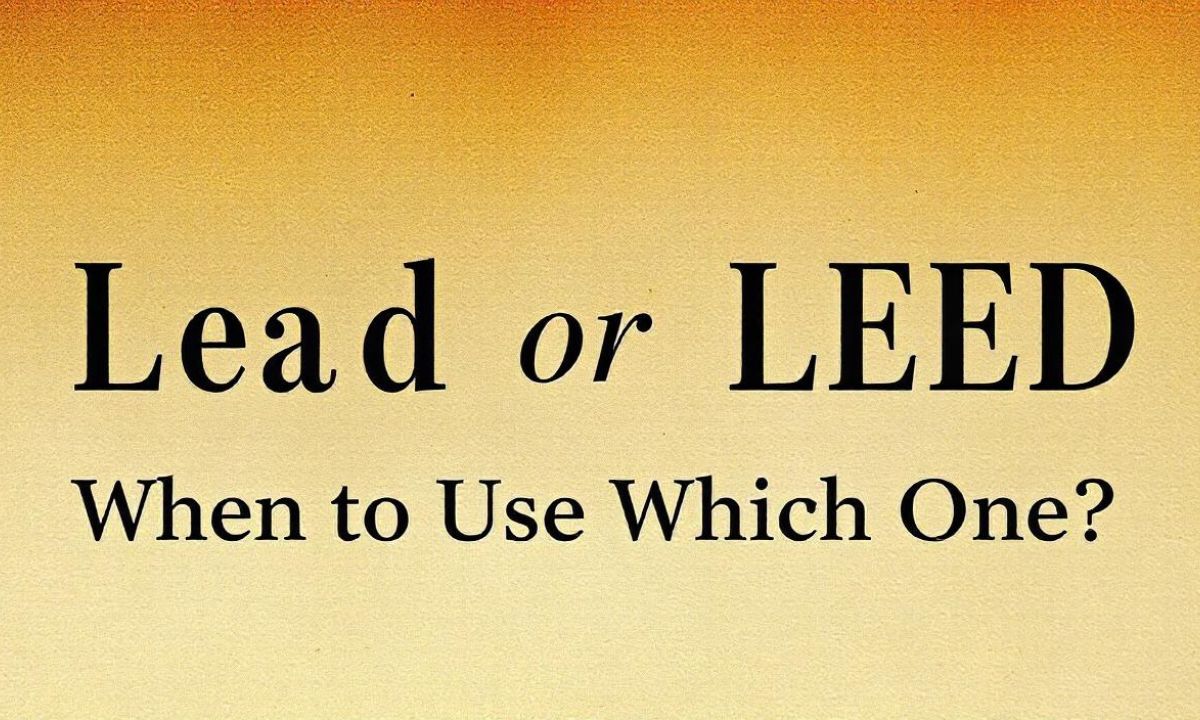Language can be tricky, especially when words sound identical but carry completely different meanings. Enter the curious case of lead and LEED – two terms that might sound the same but represent wildly different concepts.
Whether you’re an architect, a writer, or simply someone who loves precision in language, this guide will unravel the mystery behind these often-confused terms.
Understanding the Difference: Lead vs LEED
In the vast landscape of language, few word pairs create as much confusion as “lead” and “LEED”. While they sound identical when spoken, these terms represent completely different concepts. One refers to a dense metallic element or the act of guiding, while the other represents a prestigious green building certification system.
Understanding their distinct meanings is crucial for professionals in fields ranging from construction and environmental design to writing and communication.
Lead: The Heavy Metal and Leadership

Lead is a fascinating term with multiple identities. As a chemical element, it’s a heavy, bluish-white metal with significant industrial applications and environmental implications.
Historically used in everything from pipes to paint, lead has a complex legacy of utility and health risks. When used as a verb, “lead” transforms into a dynamic concept of guidance, direction, and influence.
Whether describing a team leader’s strategic management or a guide’s path-finding abilities, this versatile word captures the essence of moving forward and inspiring others.
1. Lead as a Heavy Metal
Lead is a dense, malleable metal with a complex history that spans industrial applications and environmental concerns. This bluish-white element (symbol Pb) has been used for thousands of years, dating back to ancient civilizations. However, its widespread use has come with significant health and environmental challenges.
Key Facts about Lead:
- Atomic number: 82
- Density: 11.34 g/cm³
- Melting point: 327.5°C (621.5°F)
- Primary industrial uses:
- Battery production
- Radiation shielding
- Construction materials
- Soldering
Health Risks of Lead Exposure:
- Neurological damage
- Developmental delays in children
- Kidney dysfunction
- Cardiovascular problems
- Reproductive health issues
2. Lead as a Leader or Guide
Beyond its metallic identity, lead serves as a powerful verb meaning to guide, direct, or influence. It’s a term deeply embedded in leadership, management, and personal interaction contexts.
Leadership Contexts:
- Business management
- Team guidance
- Strategic direction
- Personal mentorship
LEED: The Green Building Standard

LEED represents a revolutionary approach to sustainable architecture and design. Developed by the U.S. Green Building Council, this certification system has become a global benchmark for environmentally responsible construction.
More than just a rating, LEED embodies a comprehensive philosophy of reducing environmental impact, maximizing energy efficiency, and creating healthier, more sustainable built environments.
It provides a structured framework that challenges architects, engineers, and developers to reimagine how buildings interact with their surroundings.
1. LEED as a Certification
LEED stands for Leadership in Energy and Environmental Design, a globally recognized green building certification program developed by the U.S. Green Building Council (USGBC).
LEED Certification Levels:
| Level | Points Required |
| Certified | 40-49 points |
| Silver | 50-59 points |
| Gold | 60-79 points |
| Platinum | 80+ points |
2. LEED as an Energy-Efficient Building Concept
Beyond a mere certification, LEED is a holistic approach to sustainable design that considers every aspect of a building’s environmental performance. It evaluates energy consumption, water usage, materials selection, indoor environmental quality, and overall ecological impact.
The concept encourages innovative solutions that reduce carbon footprints, minimize waste, and create spaces that are not just structures, but living, breathing ecosystems that contribute positively to their surrounding environments.
LEED represents more than just a certification – it’s a comprehensive approach to sustainable design and construction that prioritizes:
- Energy efficiency
- Water conservation
- CO2 emissions reduction
- Improved indoor environmental quality
- Stewardship of resources
LEED vs Lead: A Comprehensive Comparison
Comparing lead and LEED reveals two worlds that could not be more different. Lead represents a physical element with industrial and historical significance, while LEED embodies a forward-thinking approach to sustainable design.
One is rooted in material science, the other in environmental innovation. Their similarity begins and ends with pronunciation, demonstrating how language can encapsulate dramatically different concepts within a single sound.
When to Use Which One
Lead Usage:
- Discussing metal properties
- Describing leadership actions
- Explaining guiding principles
LEED Usage:
- Referencing green building standards
- Discussing sustainable architecture
- Evaluating environmental design projects
Common Misconceptions: Leeds vs Leads
Language is riddled with potential misunderstandings, and the lead/LEED/Leeds trio is a prime example. Many people mistakenly interchange these terms, creating grammatical and contextual confusion.
“Leads” is a verb form, “lead” can be a noun or verb, “Leeds” is a city in England, and “LEED” is a specific certification. Understanding these distinctions requires careful attention to context, highlighting the nuanced nature of English communication.
Many people mistakenly use “Leeds” or “Leads” interchangeably, creating grammatical confusion. Here’s a quick guide:
- Leads (verb): Present tense of “lead”
- Led (past tense): Completed action
- Leeds: A city in England (unrelated to either term)
Scenario Example of Leads
Business Context: A sales manager leads her team by setting clear goals and providing strategic guidance. Her leadership approach generates quality sales leads for the company.
Leeds or Leads, Leed or Lead: Understanding Language Nuances

Leeds or Leads
The terms “Leeds” and “leads” are often confused, but they have distinct meanings. Leeds is a major city in West Yorkshire, England, known for its vibrant culture, university, and industrial heritage. In contrast, “leads” is the third-person singular present tense of the verb “to lead,” meaning to guide, direct, or be in charge.
For example, a business manager leads her team to success, while a tourist might explore the streets of Leeds during a visit to the United Kingdom.
Leed or Lead
“Leed” is not a standard English word, while “lead” has multiple meanings. As a noun, lead can refer to the heavy metal with chemical symbol Pb, used in various industrial applications. As a verb, lead means to guide or direct, such as a captain leading a ship or a manager leading a team.
In the context of green building, LEED (Leadership in Energy and Environmental Design) represents a sustainable certification system. The pronunciation remains the same, which often causes confusion for writers and speakers.
Leads vs Leeds
The distinction between “leads” and “Leeds” highlights the importance of context in English language usage. “Leads” is a verb form indicating guidance or direction, as in “She leads the project team.”
It can also refer to potential business opportunities, like sales leads. On the other hand, “Leeds” is a proper noun referring to a specific city in England.
The similarity in pronunciation can create misunderstandings, especially in spoken communication. Writers and speakers must pay careful attention to context to use these terms correctly and avoid grammatical errors.
Conclusion: Mastering Lead vs LEED
Understanding the nuanced differences between lead and LEED goes beyond mere linguistic precision. It reflects the complexity of language and the specialized domains of metallurgy, leadership, and sustainable design.
Key Takeaways
- Lead can be a metal or a verb about guidance
- LEED is a green building certification system
- Context is crucial in determining the correct usage
Call to Action
Have you encountered confusing language distinctions? Share your experiences in the comments below! Want to dive deeper into sustainable design or language nuances? Check out our related resources.
Pro Tip: When in doubt, context is your best friend. Always consider the surrounding information to determine whether you’re discussing the heavy metal, leadership, or green building standards.

